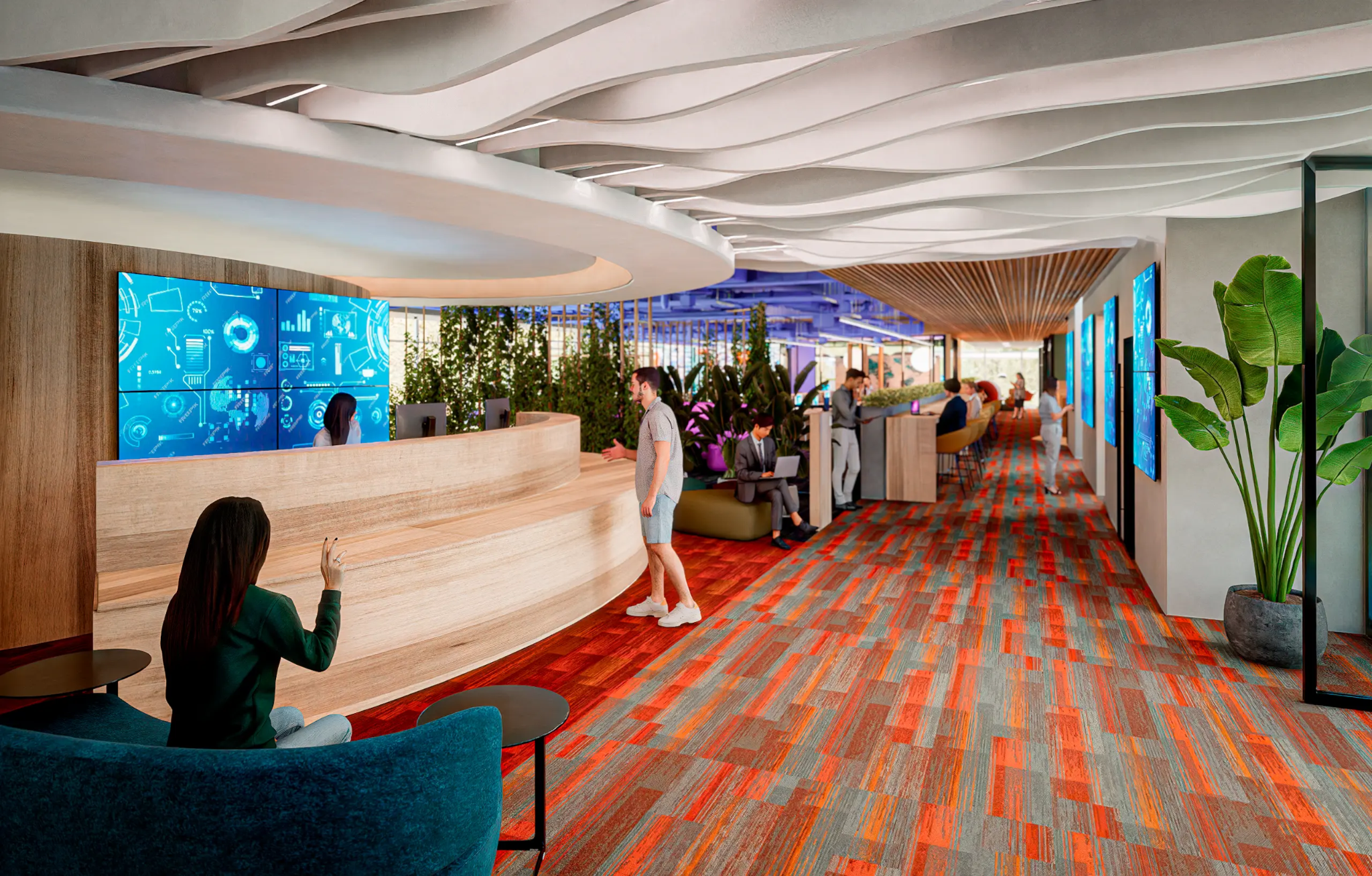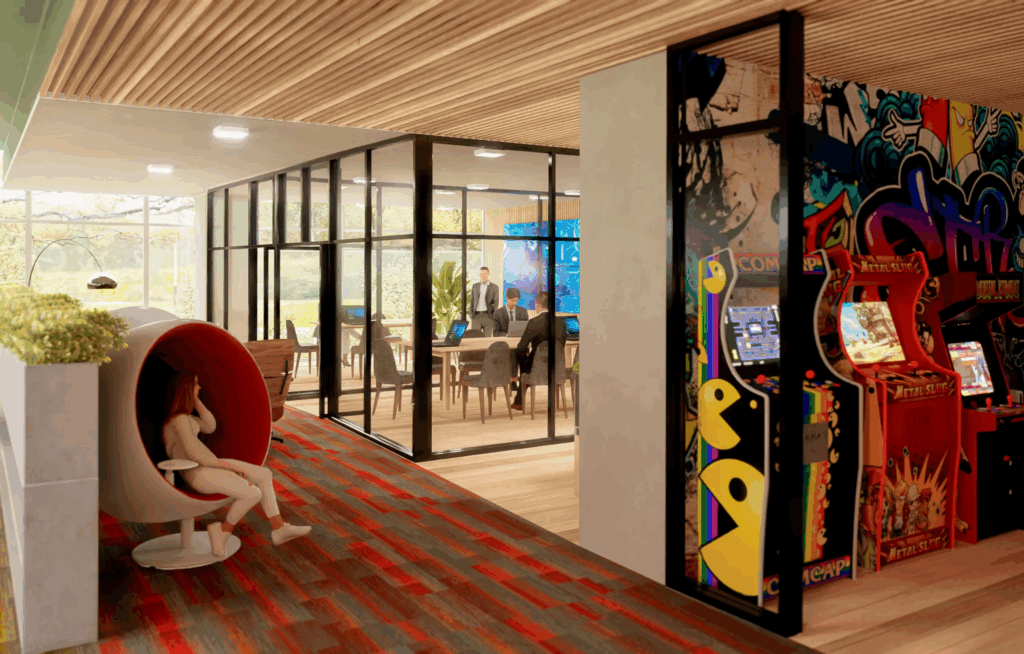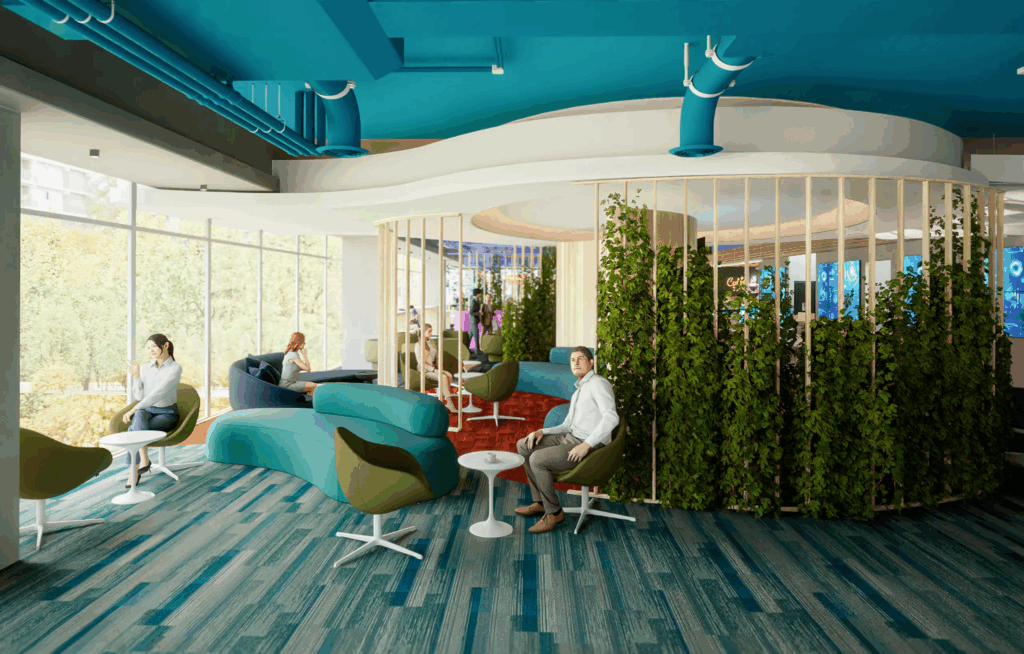Allan joins Vida by Property Vista’s tenured leadership team to bring innovative lead management platform to the U.S. market LAS VEGAS, June 17, 2024 /PRNewswire/ – Property Vis...
Mini Corporate Headquarters Bring Agility Corporate Real Estate Operations




“Right now, employees are more distributed than ever before. Companies want to motivate their employees to go back to the offices, but instead, they have employees distributed now,” explains Gonzalo Aguero, Co-Founder and CEO of OFFI, a company specializing in workplace solutions.
This shift in workforce distribution is driving a significant change in corporate real estate strategy: the emergence of mini headquarters. Rather than maintaining a single, massive corporate campus, companies are increasingly establishing networks of smaller offices strategically positioned closer to where their employees actually live.
From Monolithic to Distributed: The Evolution of Corporate Space
The traditional model of a central headquarters has been the cornerstone of corporate identity for generations. These sprawling campuses, often located in major metropolitan areas, served as the physical manifestation of a company’s brand and culture. However, the pandemic-accelerated shift to remote work has altered this paradigm.
“Instead of having one big headquarters, companies are now establishing more small headquarters, mini headquarters, in different cities and countries,” Aguero notes. “We are seeing this trend of not having big headquarters, but having smaller headquarters in different cities.”
This transition isn’t simply about downsizing. It represents a fundamental rethinking of what office space is meant to accomplish. Recent industry data supports this shift, with 38% of office-using companies expecting to expand their occupied space within the next three years, not by enlarging existing locations, but by establishing new, smaller outposts in diverse locations.
The Office as Experience: Competing with Home Comfort


As companies navigate the current workplace landscape, they’re confronting a new reality: the office must now compete with the comfort and convenience of home. This competition has influenced how organizations approach office design and location strategy.
“The office now functions as an experience. Companies are focusing on creating a better experience than staying at home,” Aguero observes. This experience-focused approach is reflected in industry metrics, with employee satisfaction rising 75% in client rankings this year, indicating a greater emphasis on office amenities and environment quality.
Mini headquarters offer a compelling solution to this challenge. By establishing smaller offices closer to where employees live, companies can eliminate one of the most significant drawbacks of traditional office work: the commute.
“Companies are building small headquarters, small offices, even in big cities, to ensure employees don’t have to travel long distances,” explains Aguero. This proximity strategy addresses a key pain point while still providing the collaboration benefits of in-person work.
Data-Driven Office Placement
The strategic placement of these mini headquarters isn’t happening arbitrarily. Forward-thinking companies are leveraging employee location data to optimize their real estate decisions.
“We have a solution where we can tell companies, based on employee locations, where they should put their offices to be more efficient,” Aguero shares. This data-driven approach ensures that new office locations truly serve employee needs rather than corporate assumptions about where offices should be.
The math simply doesn’t support maintaining traditional offices in locations where only a fraction of employees reside. “For companies, unless you have employees located in one city, it doesn’t make sense to have an office just for 15 employees,” notes Aguero.
The Coworking Connection


The mini headquarters trend is closely intertwined with the growth of coworking spaces, which now total 140.1 million square feet nationally, a significant year-over-year increase. These flexible workspaces provide companies with turnkey solutions for establishing local presence without the long-term commitments of traditional leases.
For many organizations, particularly those with widely distributed teams, coworking spaces serve as ready-made mini headquarters. They offer professional environments with amenities that rival or exceed what many companies could provide independently, all without the capital expenditure of building out custom space.
“We are trying to create communities inside each of the companies, allowing them to coordinate and go to the same locations,” Aguero explains. This community-building approach addresses concerns about distributed work potentially diminishing company culture and collaboration.
Global Considerations and Technological Enablers
The mini headquarters trend isn’t limited to domestic markets. Companies are increasingly establishing these smaller outposts internationally, creating new challenges in administration and operations.
“We have created technology that allows us to automate certain processes, including currency conversion,” Aguero notes. These technological solutions enable the distributed office model, allowing companies to manage multiple locations without proportionally increasing administrative overhead.
The international dimension of this trend reflects both the increasingly global nature of talent acquisition and the recognition that different markets may require different in-person presence strategies. What works in New York may not be appropriate for London or Singapore, and mini headquarters allow for customization to local conditions.
Talent Acquisition and Retention Implications
A significant driver of the mini headquarters trend is its impact on talent acquisition and retention. By establishing offices closer to where employees live, or want to live, companies can access talent pools that might otherwise be unavailable.
“We strongly believe in people, and recruiting the talent we need in the next three to six months is going to be very challenging and crucial for our growth,” Aguero emphasizes. This sentiment is echoed across industries as companies recognize that their real estate strategies directly impact their ability to attract and retain top talent.
The mini headquarters approach allows companies to maintain physical presence in multiple talent markets without the expense of establishing full-scale operations in each location. This flexibility is particularly valuable for organizations in competitive sectors where access to specialized talent can make or break business objectives.
Looking Forward: The Future of Corporate Real Estate
As the mini headquarters trend continues to evolve, industry experts anticipate several key developments. Technology integration is expected to accelerate, with smart building features becoming standard in these distributed offices to ensure seamless experiences across locations. Flexibility will also be a defining characteristic, as spaces are designed to adapt to shifting team needs. Enhanced collaboration tools will play a critical role, enabling more sophisticated virtual connections essentially creating “virtual hallways” between physically separate sites. Additionally, the shift toward smaller, decentralized offices supports broader sustainability goals, as these spaces typically carry a lighter environmental footprint than traditional corporate headquarters.
The shift toward mini headquarters represents more than just a real estate trend, it signals a fundamental rethinking of how companies structure themselves physically in response to changing workforce expectations. Companies embracing this distributed approach are positioning themselves to adapt more effectively to the evolving workplace landscape.
Similar Articles
Explore similar articles from Our Team of Experts.


BACCARAT RESIDENCES MIAMI BACCARAT RESIDENCES MIAMI BACCARAT RESIDENCES MIAMI BACCARAT RESIDENCES MIAMI BACCARAT RESIDENCES MIAMI Baccarat Residences Miami emerges as a pinnacle of urban sop...


Delivered by expert home inspector instructors from around the country, AHIT has trained over 76,000 home inspectors. The CE Shop’s industry-leading education equips those looking to start...


Recently completed net-zero home in the West Plaza neighborhood Local architecture/build firm is delivering high-performance homes that satisfy requirements for new builds and deliver comfor...


BASE SHELF PROSPECTUS IS ACCESSIBLE, AND PROSPECTUS SUPPLEMENT WILL BE ACCESSIBLE WITHIN TWO BUSINESS DAYS, ON SEDAR+ NOT FOR DISTRIBUTION TO U.S. NEWS SERVICES OR DISSEMINATION IN THE UNITE...



